Many people assume that cyprinid fish cannot be broken up with other fish species. However, fortunately, they can. Alternative peaceful fish and invertebrates will remain intact with Cyprinid fish if they are also a cold water species. Cyprinid fish measure one of the most important standard fish in the fish tank hobby and measure goldfish that are available in a variety of different shapes and sizes.
The square measure Goldfish is generally considered a peaceful fish that should tackle giant aquariums or a lake. Since cyprinid fish would need to tackle such gigantic bodies of water, making sure tank mates tackle similar conditions is necessary for each species to thrive properly.
So join us as we go over the absolute best Tank Mates for a Goldfish!
Table of Contents
Starting The Best Tank Mates for a Goldfish
Newts(Pleurodelinae)
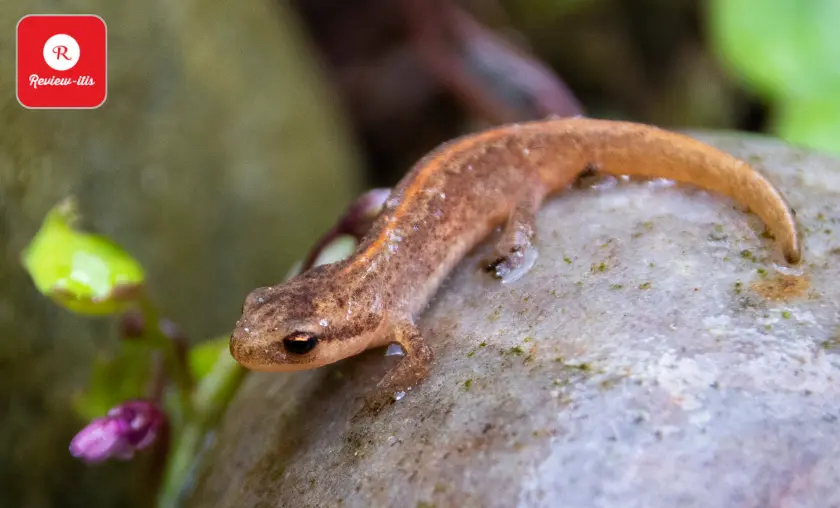
| Size: | 6-9 inches |
| Diet: | Carnivores |
| Minimum Tank Size: | 20 gallons |
| Care Level: | Intermediate |
| Temperament: | Peaceful & inquisitive |
Newts originate from shallow rivers and streams, wherever they spend most of their time sorting through the substrate or among rocks in search of food. They are fast and agile, meaning a sturdy tank cover is crucial to keeping them safe and secure in an extremely cyprinid tank. The Newt area unit is most suitable for cyprinid ponds, where they will mimic their natural behaviors.
It is best to avoid keeping fish-eating newt species such as the newt with cyprinids. Some species of newts can ideally be intact with the cyprinid fish area unit Lissotriton Vulgaris and thus the alpine newt. The type of newt that wants to stay next to your cyprinid should be fully researched beforehand, as cyprinids can eat tadpoles and eggs, while newts can eat cyprinids.
Snails(Ampurllariidae)– Best for Small Tanks
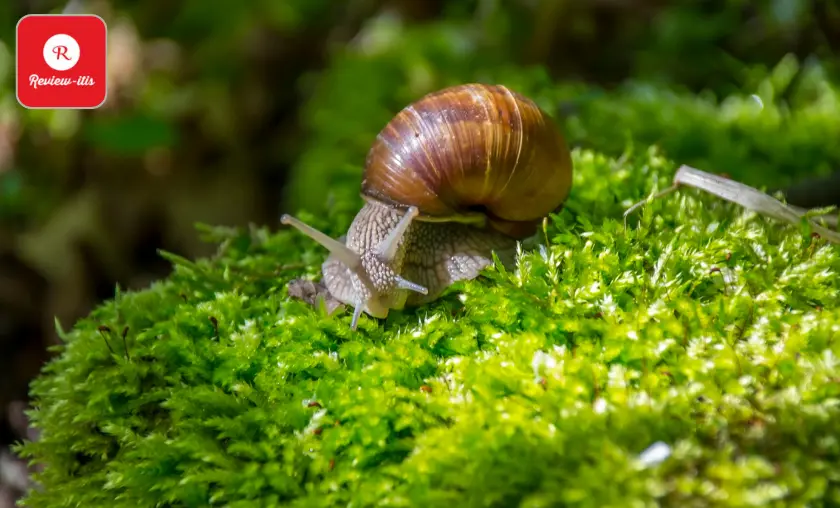
| Size: | 1-4 inches |
| Diet: | Omnivores |
| Minimum Tank Size: | 10 gallons |
| Care Level: | Beginner |
| Temperament: | Peaceful |
A good form of aquatic snail is ideal for keeping with cyprinid fish. Once the correct species of snail is selected for a cyprinid fish tank or lake, the size of the snails must be considered. The most common snails and cyprinid fish measure a mystery, ram’s horn, bladder, killer, and apple snails.
Giant cyprinid fish are notorious for eating smaller snails like ramshorn or bladder snails, so make sure your tank has adequate hiding areas to reduce snail loss. Mystery snails are too large in their adult stage to be eaten by cyprinid fish, making them a perfect invertebrate tankmate for cyprinid fish. Snails can rarely bother your cyprinid fish, allowing these two creatures to cohabit peacefully.
Apple Snail(Pomacea Bridgesii)
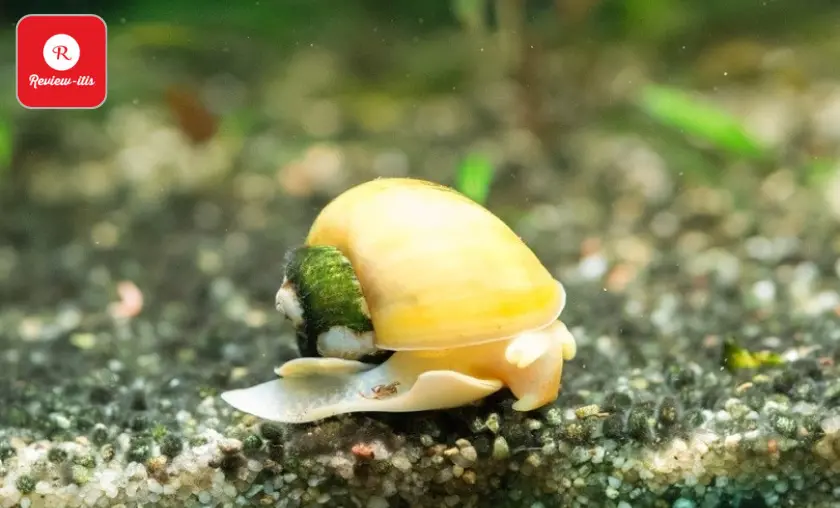
| Size: | 2-4 inches |
| Diet: | Omnivores |
| Minimum Tank Size: | 20 gallons |
| Care Level: | Beginner |
| Temperament: | Peaceful |
Apple snails grow to giant sizes that make it almost impossible for a cyprinid fish to eat them. Apple snails are available in a range of colors and create the right peaceful tank mate for cyprinid fish. This snail also eats food scraps and debris left in the cyprinid fish tank and will be part of a necessary cleanup crew in the atmosphere of a lake or tank.
Apple snails live in captivity for about two to four years and feed primarily on protoctists and live plants inside the tank. If you are thinking of making a planted tank for your cyprinid fish, apple snails will not be the best option, as they will cull the plants in record time. Mystery snails will be more suitable if this is often the case.
If you are new to the world of cyprinid fish farming or are fully grown but like to learn a lot, we highly recommend checking out the popular book, The Cyprinid Facts on Amazon.
From designating diseases and providing the correct treatments to correct nutrition, tank maintenance, and water quality recommendation, this book can help you ensure your Cyprinid fish are happy and help you be the best Cyprinid fish keeper you’ll ever know.
Bamboo Shrimp(Atyopsis moluccensis)
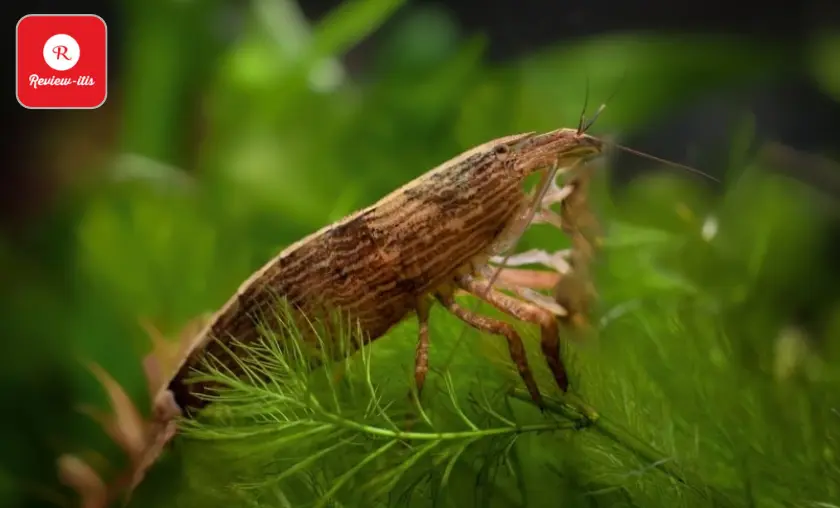
| Size: | 2-3 inches |
| Diet: | Omnivores |
| Minimum Tank Size: | 15 gallons |
| Care Level: | Intermediate |
| Temperament: | Exploratory and community based |
Bamboo shrimp grow larger than alternative shrimp species, such as cherry shrimp. The smallest shrimp are at risk of being eaten by even the smallest race of cyprinids, while the large size of the bamboo shrimp minimizes this risk.
Although the bamboo shrimp will not break up with the cyprinids, it is important to note that the cyprinids may still try to eat these shrimp, and you will face some losses along the way. Bamboo Shrimp can eat protoctists and food scraps around the tank, making them one of the best cleanup crews for cyprinids and notoriously messy fish.
The lake or tank should have very dense cover in the form of live plants, rocks, driftwood, and industrial shrimp caves to produce bamboo shrimp with hiding places to prevent being eaten or blackened by cyprinids.
Hillstream Butterfly Loach(Beaufortia Kweichowensis)
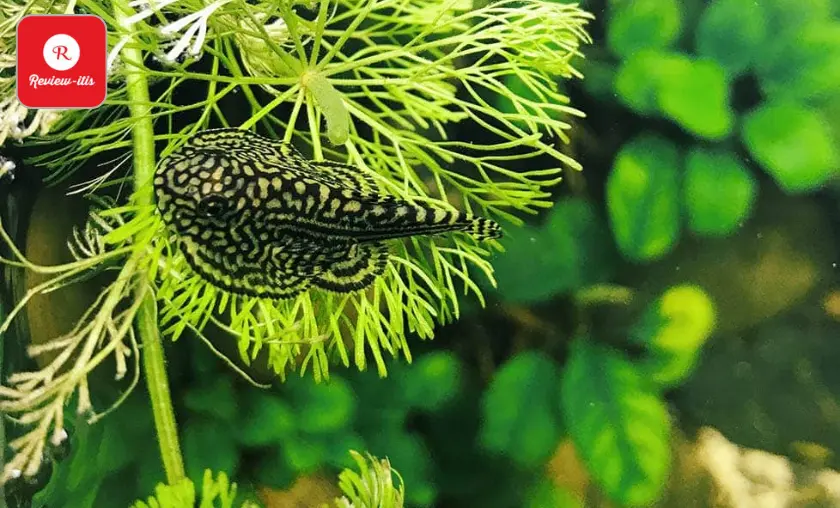
| Size: | 2-3 inches |
| Diet: | Omnivores |
| Minimum Tank Size: | 15 gallons |
| Care Level: | Intermediate |
| Temperament: | Peaceful community fish |
The Hillstream butterfly fish can be a dazzling and delicate species of temperate water fish. These fish are herbivores and spend most of their time eating protoctists and biofilms, which establish themselves in an over cycled cyprinid lake or tank.
They don’t get massive and can look attractive in aquariums. They need a novel body shape that looks like a lightning bolt, with dots and patterns all over the body. Hillstream Cyprinidae Butterflyfish have more to offer than just beauty and tranquility; they are also excellent tank cleaners that can keep your Cyprinid tank spotless and free of protoctists, debris, and food scraps.
White Cloud Minnows(Tanichthys Albonubes)
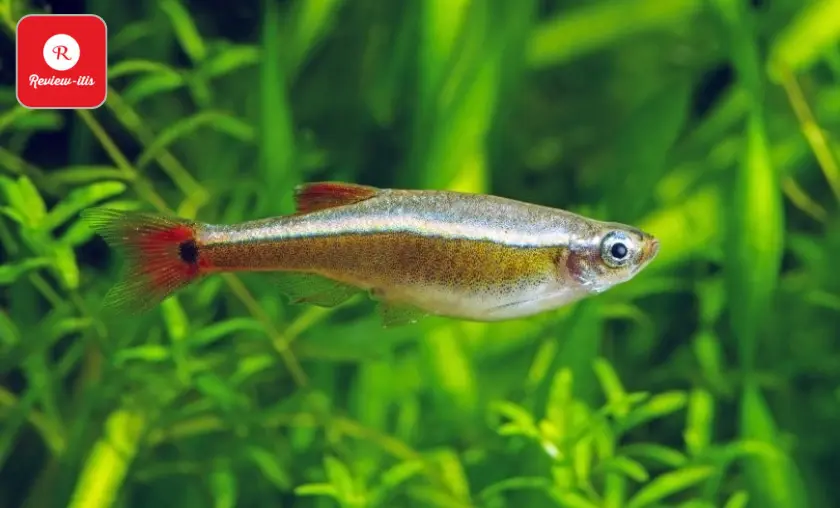
| Size: | 1.5 inches |
| Diet: | Omnivores |
| Minimum Tank Size: | 20 gallons |
| Care Level: | Beginner |
| Temperament: | Peaceful shoaling fish |
An often overlooked species of schooling fish that does not break with the cyprinids is the white cloud fish Phoxinus phoxinus. These are temperate water fish, meaning they will be intact in both hot and cold glasses of water in captivity.
They need a silver coloration and grow to a comparatively small adult size. They like to breed in teams of the same species and can inhabit the middle level of the tank. They like to hide within dense undergrowth like tank bryophytes and other bushy plants. Their small size makes them a more suitable tank mate for young fancy cyprinids that are too slow and small to eat the White Cloud Phoxinus phoxinus.
Dojo Loach(Misgurnis Anguillicaudatus)
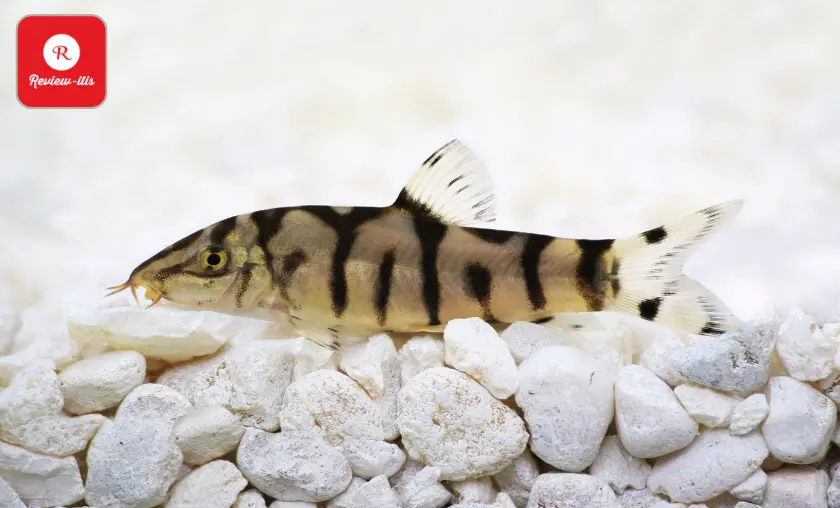
| Size: | 4-6 inches |
| Diet: | Omnivores |
| Minimum Tank Size: | 25 gallons |
| Care Level: | Intermediate |
| Temperament: | Peaceful community fish |
This peaceful community fish can be a nursing associate herbivore and enjoys consuming protoctists and debris that form both horizontal and vertical surfaces in a tank. The Dojo Cyprinidae is a slender fish that hangs mainly around the bottom of the Associate in Nursing tank.
They are docile and seem to mind their own business. Dojo Cyprinid fish will survive in warmer Cyprinid aquariums where the temperature does not fluctuate the other way by a few degrees. Dojo loaches are not the best choice for outdoor ponds because of this.
Platy(Xiphophorus)
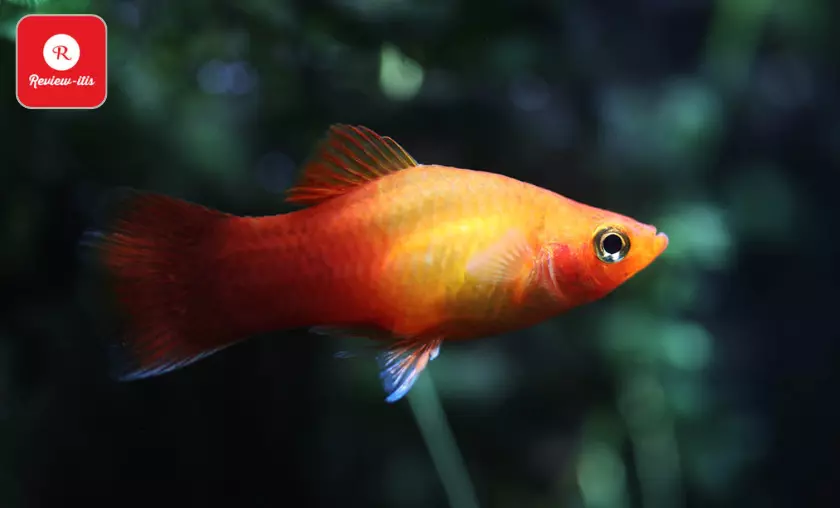
| Size: | 2-4 inches |
| Diet: | Omnivores |
| Minimum Tank Size: | 20 gallons |
| Care Level: | Beginner |
| Temperament: | Peaceful community fish |
Platypus can be a colorful and attractive shellfish that can withstand a variety of water temperatures. They {do|are doing} best in cyprinid tanks close to the maximum temperature demand for cyprinids, typically between 68°F and 75°F. Platys are a species of viviparous fish that are curious and playful.
They will be seen playfully chasing fish of their kind and even snuggling up in the dead of night once it’s time to sleep. Platyfish will be intact in a tank with many cyprinids if enough vegetation covers them. Since they are on the larger end, the livebearer will be untouched by small to medium-sized fancy cyprinids.
Khuli Loach(Pangio Khulii)
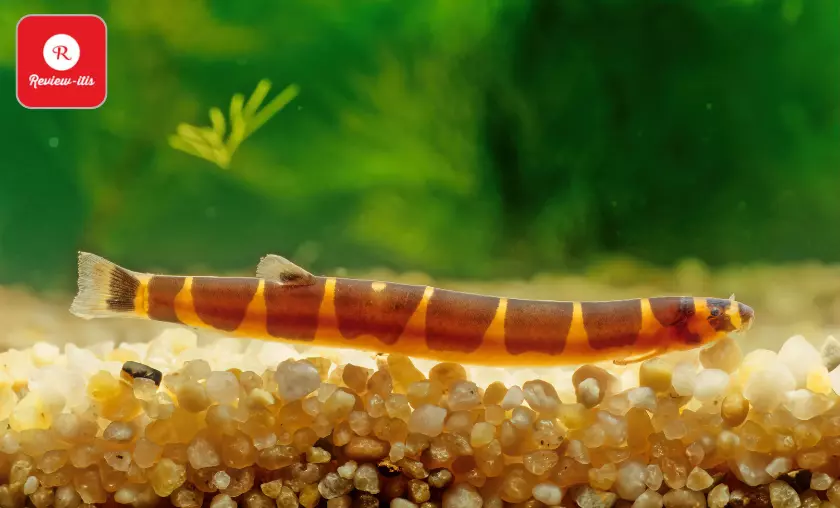
| Size: | 4-7 inches |
| Diet: | Omnivores |
| Minimum Tank Size: | 15 gallons |
| Care Level: | Beginner |
| Temperament: | Peaceful community fish |
The Khuli Cyprinidae may be a unique-looking species of fish within the Cyprinidae family of fish. they are creatures that spend most of their time hiding under rocks and wood wherever they form closed teams for safety. The most common color seen in Khuli loaches can be a pattern of yellow and brown bands, but simple brown, black, and tan colorations can be obtained.
Khuli loaches take advantage of leftover fish food and protoctists that float to the bottom of the tank. If you plan to keep Khuli loaches in your cyprinid tank, dragon rock with holes everywhere and large misshapen wood is important to produce them with hiding places.
Bristlenose Plecos(Ancistrus Cirrhosus)
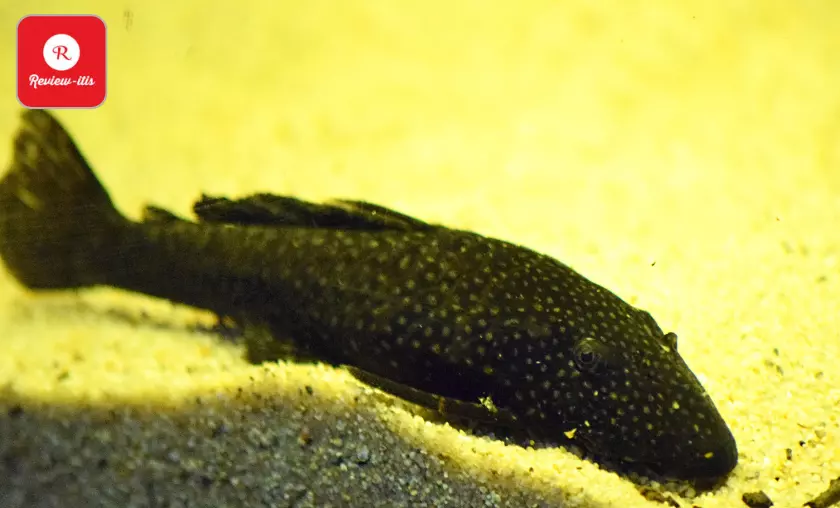
| Size: | 4-6 inches |
| Diet: | Omnivores |
| Minimum Tank Size: | 20 gallons |
| Care Level: | Beginner |
| Temperament: | Peaceful grazer |
The Bristling Plecostomus is a wonderful algae eater for cyprinid aquariums. These fish do an excellent job of ridding the tank of stubborn protoctists. The bristle-nosed pleco can rarely interfere with cyprinids, and they do not seem to be as well known as the cyprinid slime coat if given the right food.
Most cyprinid keepers have luck keeping these two species of fish, and you can select a pleco that comes in a variety of color forms, with the main standard being the unusual person. The temperature should remain constant in the mid-70s, even in winter, to ensure this Plecostomus does not get cold.
Rosy Barb(Puntius Conchonius)
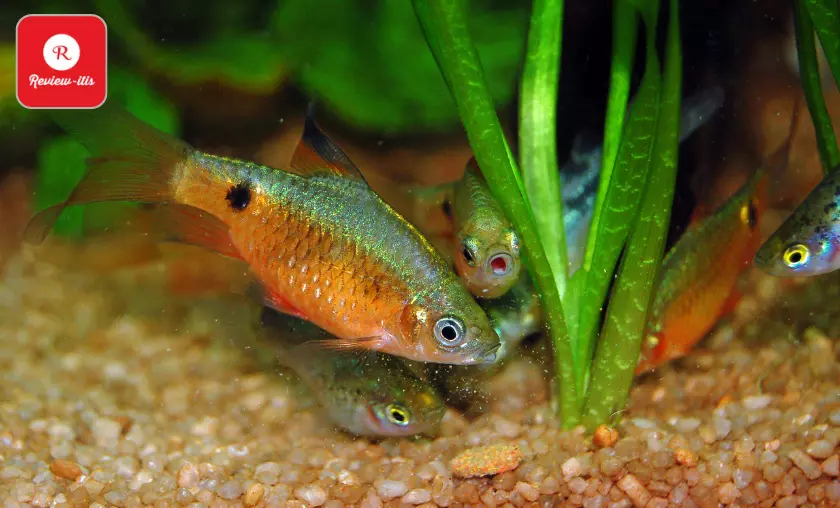
| Size: | 4-6 inches |
| Diet: | Omnivores |
| Minimum Tank Size: | 30 gallons |
| Care Level: | Beginner |
| Temperament: | Community Fish |
A striking variation of the common barb fish is the pink barb. These fish have a golden coloration throughout their bodies that appear to glow underwater. Rosy Barbs also like to be in giant teams of their species, so you should keep them in an extremely large school if tank size allows.
Since rosy barbs value the tank surface more, they will not act in ponds where predators will notice and attack them. The rosy barb could clip the fins of flowing cyprinids, so stick with the ledge and standard cyprinid if you want to deal with them.
Golden Mountain Minnow(Tanichthys Albonubes)
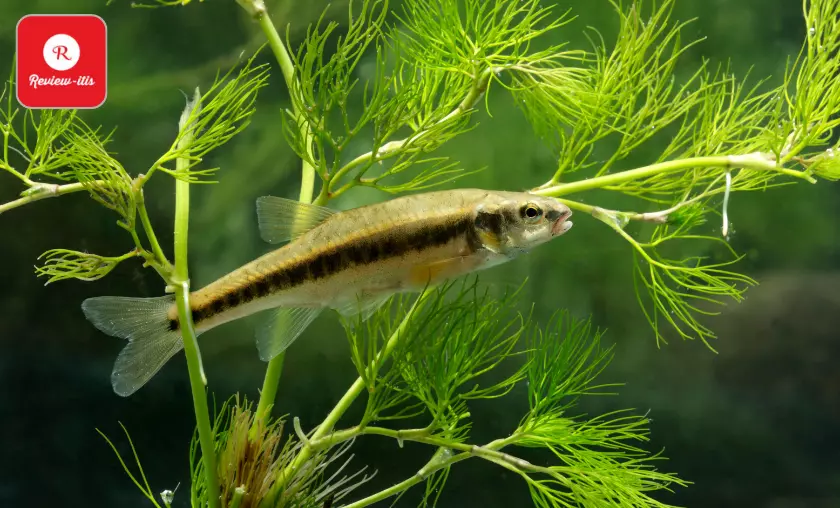
| Size: | 1.5 inches |
| Diet: | Omnivores |
| Minimum Tank Size: | 15 gallons |
| Care Level: | Beginner |
| Temperament: | Peaceful shoaling fish |
This is a color variation of the common white cloud cyprinid fish that has a silvery appearance. The golden mountain cyprinid fish has a golden complexion with red fins that have a small white dot on the tips. These fish will tolerate cold temperatures well, as they are temperate water fish.
This makes them able to thrive in water temperatures very similar to that of cyprinids. The small size of mountain goldfish makes them a direct target for a hungry cyprinid, so the tank should have plenty of live plants for them to hide in.
Checkered Barb(Puntius Oligolepis)

| Size: | 4-6 inches |
| Diet: | Omnivores |
| Minimum Tank Size: | 30 gallons |
| Care Level: | Beginner |
| Temperament: | Community fish |
The checkered barb has a beautiful purple-to-blue coloration with red or black fins. They are endemic to streams, lakes, and rivers in parts of the land and have also established themselves well in the South American country. Adult males have red fins tipped with black, while females are lighter in color.
They will tolerate cooler temperatures well, allowing them to cohabit with cyprinids. The checkered barb likes to stick minting acceptable equipment for safety and measuring better for tanks than ponds.

What Makes a Good Tank Mate for Goldfish?
The type of tank mate you want for your cyprinid plays a big role in the type of tank mate that is best suited for your cyprinid pool or tank.
- Snails: Ideal for every tank and smaller ponds.
- White/Golden Mountain Minnows: Great for Tanks
- Newts: Best suited to giant ponds with live vegetation and sandy substrate.
If you commit to adding tank mates to your cyprinid tank, the minimum size of the fish or invertebrate species should be calculated for the size of the goldfish tank. This means that if you intend to field gold mountain minnows, the goldfish’s tank size should be another fifteen gallons to ensure there is enough room to swim and hunt.
One of the simplest and most popular cyprinid tank mates is square-sized snails like the mystery or apple snail that grow to a giant adult size. Snails can tolerate a variety of conditions in which some species of fish may find it difficult to thrive. Keep in mind that cyprinids are terribly mucousy, which could adversely affect multiple tank mates, so an honest filter should be used at regular water changes.
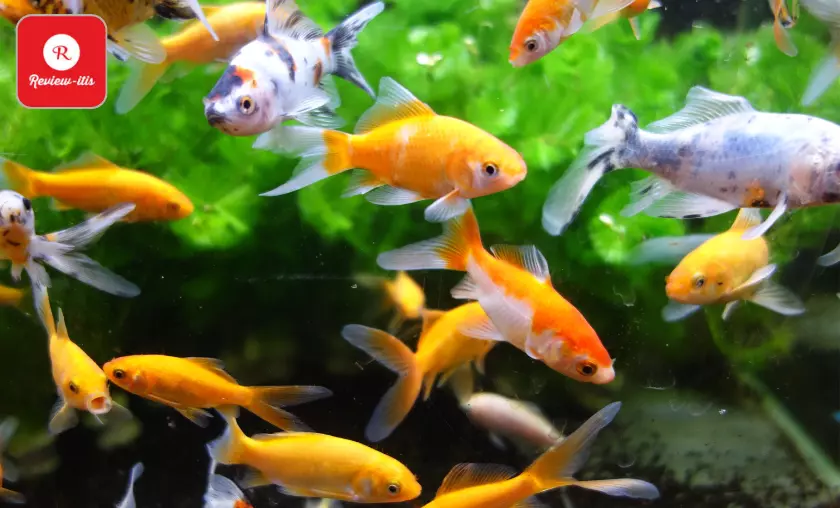
Where Do Goldfish Prefer to Live in the Aquarium?
Active Goldfish area drive and swim everywhere in the nursery. However, they will be spending most of their time in the mid-level associate nursery. The tank pool should reach the shallow end to make sure the gas-to-water magnitude ratio is good.
The minimum tank size for small cyprinid fish is forty gallons, while normal or alien-body cyprinid fish should be kept intact in a tank no larger than fifty-five gallons to ensure there is enough room to swim.
Water Parameters
The Goldfish area unit is a terribly moldy fish and could quickly dirty a clean vivarium. They eat tons of food that seems to go through them and shed tons of waste. This contributes to bioburden that is tolerable for cyprinid fish but not for their tankmates. These wastes turn into nitrates associated with ammonia which can cause all kinds of problems in a nursery.
The best water conditions for cyprinid fish area unit 0ppm ammonia and group, with but 20ppm nitrate. A cycled vivarium will quickly convert the waste to a less cyanogenic type of ammonia, which may be a nitrate, but from time to time, the useful microorganism may have difficulty accommodating this large amount of cyprinid fish bioburden.
Size
Goldfish grow to a very large adult size, which is why the vivarium needs to be so large. Fancy Cyprinid fish will grow to between eight and twelve inches in size, while Long Bodied Cyprinid fish will grow to between ten and fourteen inches on average. With this in mind, it’s easy to imagine how a cyprinid fish will foul the water in a smaller body of water.
This makes it essential to consider the adult size of your cyprinid species before purchasing a tank or pool for them. There should be enough volume of water for them to swim comfortably and enough to co-dilute their waste. This also makes long-bodied cyprinid fish like the common or alien body measure {in a|during a|in an extremely|in a terrible} very large pond or tank.
Aggressive Behaviors
Goldfish area unit, generally peaceful and coltish fish that have negligible aggressive behaviors. Cyprinid fish should not be divided into pairs or teams as they are social among their species. They will be lonely and bored if they don’t break on their own, which can cause a spread of behavior problems.
Having tank mates in your cyprinid fish tank is not a substitute for alternative cyprinid fish. All species in the fish community cannot offer equivalent enrichment as one species of fish.
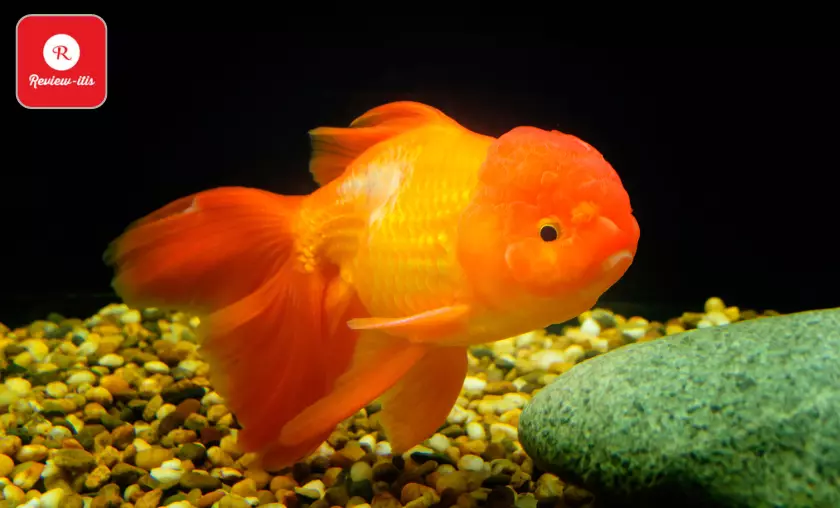
Benefits of Having Tank Mates for Goldfish in Your Aquarium
Companionship
Adding tankmates to your cyprinid fish tank will offer them additional friendship and fun. It can even make a cyprinid fish tank look less empty and add fun to different levels of the tank depending on the type of tank mate you choose for your cyprinid fish.
Variety
Tankmates will add additional color and selection to a Cyprinid fish pond. This is often ideal for some keepers because it adds an extra natural side to a boring goldfish-only vivarium.

Conclusion
There are many ideal tank mates for goldfish to choose from. The style of tank mate you decide on depends on the conditions of your goldfish. Some fish area units can only thrive in warmer goldfish tanks, while others do just fine in cold cyprinid fish tanks.
Cyprinid Fish Area Unit is Peaceful enough to successfully cohabit with a wide variety of tank mates, giving you plenty of options to include in your Cyprinid fish pool or tank.
We hope this text has helped you decide on the right tank mate for your goldfish!
To read more similar articles, click here.
Thanks for visiting our Website. If you appreciate our work, kindly show us some support in our comments section. 🙂